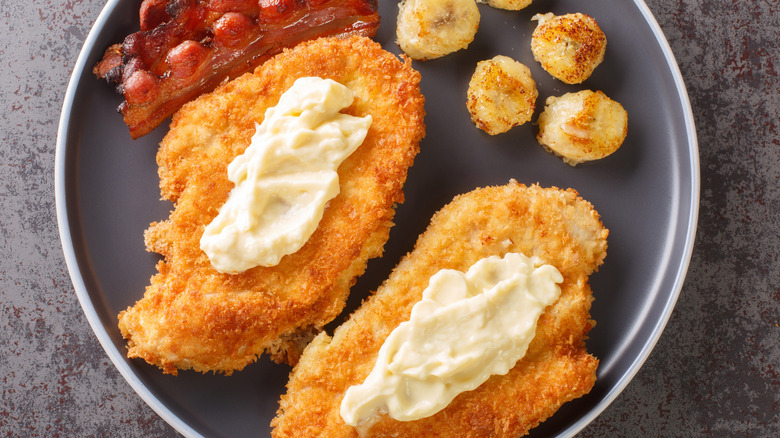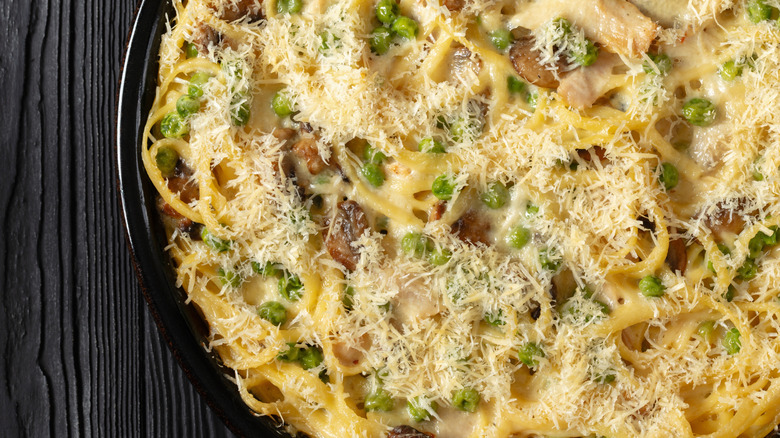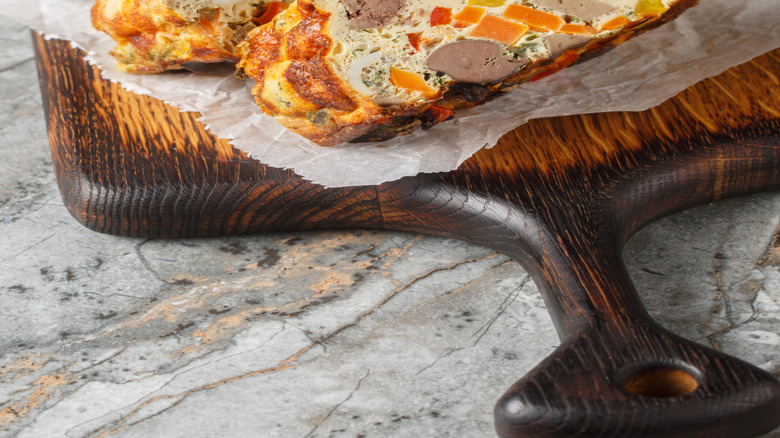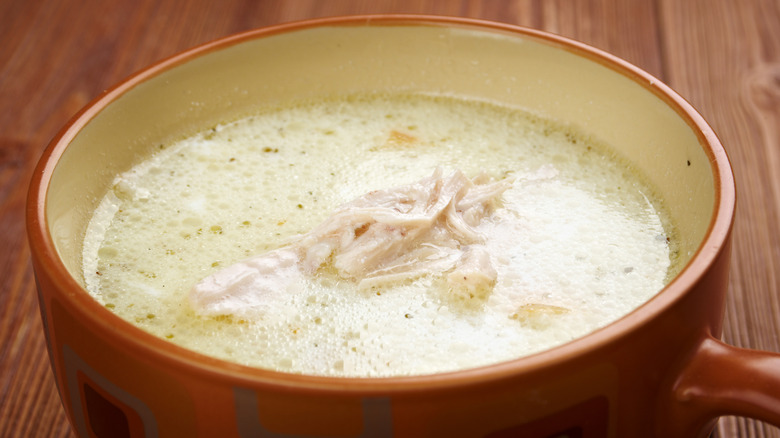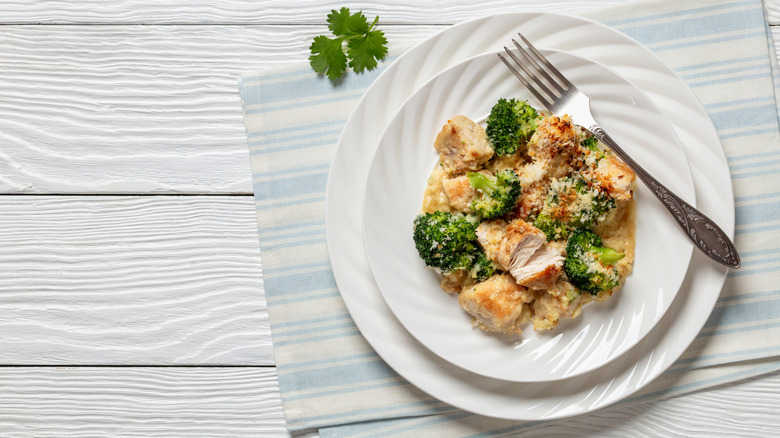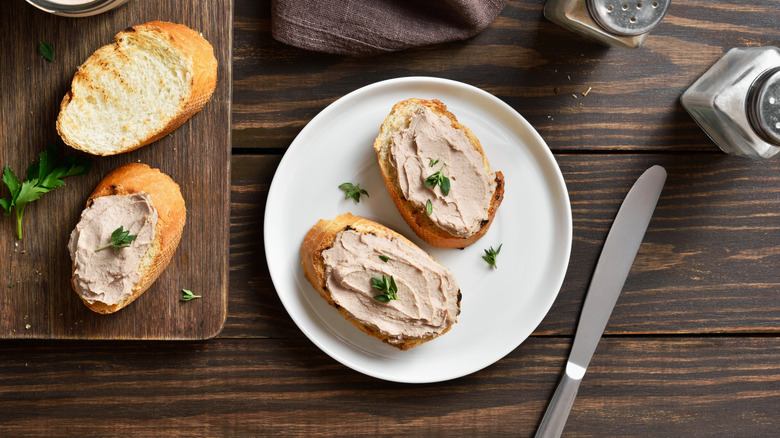Retro Chicken Dishes You Won't Find In A Restaurant Anymore
Chicken has long been a staple of many diets, readily available and widely enjoyed. It's a poultry that can be both simple and sophisticated, gracing every angle of the culinary world, including classics like chicken noodle soup and cordon bleu. Multiple styles of cuisine make use of this ingredient, from unique Japanese creations such as chicken katsu to endless international styles of fried chicken. Yet, not all chicken dishes have the same staying power.
There are dozens of chicken concoctions that once adorned the tables of swanky restaurants that are no longer seen today. Many are probably unheard of by modern readers, and even the ones you know about have unexpected origins you wouldn't anticipate. These bird-based dishes have petered out for a variety of reasons, some as a reflection of changing culinary trends and others in response to shifting perceptions of the dish. No matter the reason for their disappearance, each has their own fascinating history worthy of deeper exploration.
Chicken à la Maryland
A dish consisting of pan-fried chicken served with a type of cream gravy and occasionally a banana garnish, chicken à la Maryland was once considered a very fashionable dish, having the high status to be served to first class passengers on the luxurious Titanic in 1912. Before making its way to restaurant tables, it was often prepared for affluent Maryland families by African American cooks.
Although there are multiple variations on the dish, most recipes specify the bird should be fried in a cast iron pan rather than deep-fried, that the chicken be boneless and dredged in a seasoned flour coating, and most importantly, that the pan be covered at some point to steam the poultry. As for the sauce, the pan drippings are added to the cream-based gravy to accompany the breaded bird.
The dish was eventually picked up by chef Auguste Escoffier who helped popularize the dish by including a recipe in his 1934 cookbook, "Ma Cuisine." Like many other incarnations of this fare, his recipe included a banana garnish. Bananas, a high-end import in Baltimore during this dish's time, were esteemed as an extravagant item, coming with a hefty price tag. As such, plating this dish beside this costly fruit was a marker of wealth and affluence. The dish began to disappear from cookbooks in the 1960s. These days, you're unlikely to see chicken à la Maryland (or as it's sometimes called, Maryland fried chicken) at any restaurants, save a few in the Baltimore area that serve it as a retro dish.
Chicken chop suey
Once regarded as fine dining served at exclusive restaurants and even the White House, chicken chop suey began to be derided by chefs along with the rise of canned ingredients like tinned chop suey vegetables.
Chop suey first entered the American culinary scene in the secondhalf of the 1800s, where the foreign stew consisting of chicken gizzards and livers, calf's tripe, pork, chicken, and bean sprouts was received favorably by critics. As the 1900s approached, chefs began to prepare the dish for formal events and parties, in the homes of socialites and at elegant establishments like the Victoria Hotel in Chicago. Seeing the potential for a wider audience, Chinese immigrants began offering their versions of the dish to the working classes, often removing ingredients like organ meats, which were becoming harder to acquire as the 20th century approached.
Chicken chop suey was still a beloved dish in the 1920s, even gracing the table of 30th U.S. president Calvin Coolidge after it was introduced to him by his wife Grace, who was fascinated by Chinese cooking. However, it wouldn't be long before chop suey vegetables began to arrive in cans, making the fare one that could be easily prepared at home and causing the dish to fall from its elevated status. Come the 1960s, the dish was met with outright scorn, with some exclusive Chinese restaurants unwilling to serve the disgraced fare. The dish, it seems, has never fully recovered, being seen on American menus few and far between.
Chicken tetrazzini
An American creation with an Italian influence, chicken tetrazzini was named for the Italian opera singer Luisa Tetrazzini, although no sources confirm that the opera star ever tried the dish. Crafted from spaghetti, mushrooms, Parmesan, and heavy cream, this classic chicken recipe was once served in hotel restaurants throughout New York and San Francisco in the early 1900s, fading in later decades as the fare became associated with home cooking rather than extravagant cuisine.
Its origins are hotly contested. According to one account, a chef at the Palace Hotel in San Francisco created the concoction in 1905. Another story attests that New York is the origin of the dish. It is likely that the truth will never be known. Whoever invented it, the dish soon made it to the tables of some of the loftiest restaurants, being a well-liked dish of actor and gourmand Vincent Price in the 1930s — so much so that he would go on to include a recipe for tetrazzini decades later, in his 1965 cookbook.
In the 1960s and 70s, the dish began to make appearances in home kitchens, oftentimes using canned soup in lieu of a classic homemade sauce. In the following decades, the fare became considered a perfect way to use up holiday leftovers, falling ever further from its fashionable origins. Recipes began to evolve, with some preparations subbing cheddar cheese for Parmesan, or adding canned meat or hotdogs. Other regional variations cropped up, including those using canned chiles, tinned tomatoes, and processed American cheese. Today, you're more likely to find this dish in the frozen section of your grocery store rather than on an eatery menu.
Chicken terrine
Served cold and suspended in gelatin with flavorful spices, chicken terrine is rarely seen on menus these days. This high-end 70s era charcuterie offering is believed to have originated in medieval France, and still remains popular in French cuisine to this day. Named for the vessel it is prepared in, terrine differs from other charcuterie offerings like pâté in texture, often having multiple consistencies in one bite. Some terrines require up to three days to make, having a toilsome procedure of preparation, poaching, and finally pressing together the mosaic-like work of art.
Some chefs might use terrines as a way to use up leftover kitchen scraps, but the best fashion them with the perfect pairing of protein and ingredients, marrying the best possible combination of aromatics and herbs with flavorful meats. Chicken terrine is typically prepared with spices like tarragon, thyme, parsley, and black peppercorns. Other recipes include vegetables or additions like pistachios, hazelnuts, or curry. Once sliced and served with items like pickles, relish, chutney, bread, and butter, chicken terrine now seems to be a relic of the disco decade.
By the 1980s, most terrines had faded from restaurant menus, due in part to shifting opinions on foods high in fat. Besides this, the disappearance of chicken terrine may be due to its lengthy preparation, consumers' fading fondness for gelatin, and new diners' unfamiliarity with the strange-sounding dish. Even chefs who admire chicken terrine acknowledge that it's hard for many waiters to make a gelatinized loaf of chicken sound appealing.
Champagne chicken
A dish famously served at the New York City restaurant La Caravelle in the 1960s, Champagne chicken was a favorite of John F. Kennedy. Also known as chicken in Champagne cream sauce and Poularde Maison Blanche (meaning White House Chicken), JFK went as far as to hire a chef to study Caravelle's dishes for his private preparation. Consisting of chicken nestled in a creamy Champagne sauce with mushrooms and shallots, it was once served alongside other signature dishes of French haute cuisine. Yet, it has all but disappeared from restaurant menus these days. Although for a fortunate few, chicken in Champagne sauce was briefly revived for a two-day event in 2016 at a reunion event for La Caravelle, which officially closed its doors in 2004 after a 43-year run.
A recipe was included in Mary and Vincent Price's 1965 cookbook, "The Treasury of Great Recipes," that was acquired from Le Pavillon in New York. It is likely one of the closest to the original, considering the first staff at La Caravelle perfected their skills at Le Pavillon. It suggests poaching a whole chicken in butter and Champagne, using the basting juices to flavor the cream sauce (made with cream, finely chopped shallots, mushrooms, parsley, bay leaves, and thyme), simmering it until reduced, straining, and topping it off with a little more butter and Champagne.
Modern incarnations of the fare sometimes add tomato paste. Others use bacon fat or egg yolks to add extra richness to the sauce. Either way, you're unlikely to find this classic midcentury dish in any restaurants nowadays, unless La Caravelle decides to reopen its doors.
Chicken mull
A relatively plain meal assembled from chicken that is boiled in water with spices, chili flakes, and then thickened with crackers, chicken mull is likely a dish few have heard of outside of Bear Grass, North Carolina, where the annual Chicken Mull Festival is held. A fare with many regional variations and names, this porridge-like dish has a solid history in working communities. First served at large gatherings like church dinners and fundraisers, it eventually made its way to restaurant menus, like the now-closed Bill's Barbecue in Madison County.
In Martin County, North Carolina, the fare has roots in tobacco-drying. Men who stayed up overnight maintaining the fire for curing needed an activity to stave off sleep — slow-cooking a pot of chicken mull was a good way to entice company. Although its exact origins are unclear, the dish likely links back to 1800s-era fishermen, who simmered fish with onions, potatoes, and spices, creating a wholesome porridge. Known as fish muddles, the concept may have drifted inland, where less sea-faring proteins were used, such as chicken.
The names for this dish vary along with its ingredients. In some places it might be known as chicken muddle, and include additions like corn, beans, and tomatoes. Other recipes add milk, cream, or eggs. A few know it as chicken jallop, and serve the creamy chicken stew over hamburger buns. Although mostly forgotten, a few barbecue restaurants in Northern Georgia keep it as a side dish, finding it pairs well with coleslaw and hot sauce.
Chicken Divan
A classic dish of chicken, broccoli, sherry, and cream sauce, chicken Divan was the invention of the Divan Parisien Restaurant located within New York City's Chatham Hotel. Credited to chef Anthony Lagasi, the dish became wildly popular in the 1940s and 1950s, although the chef's original recipe remains a secret to this day. Sliced chicken breasts were plated with a delectable cream sauce, browned to just the right extent and delivered to the posh consumer piping hot. Some believe the original recipe used poached chicken, ensuring the bird stayed perfectly moist. As to the sauce, some declare it was a béchamel with sherry, others that it used egg yolks, like a hollandaise.
Yet by the 1960s, the dish's acclaim had significantly faded, becoming more of a home-cooked recipe than one that would be served in swanky restaurants. Soon, Campbell's Soup began reproducing recipes for chicken Divan on their soup cans, spawning simpler imitations of the classic dish. Although no longer fancy enough for most restaurant menus, recipes for this classic dinner offering still abound today in the home. These casserole creations run the culinary gamut, with more sophisticated versions using Mornay sauce or parmesan, while simpler recipes implement cream of chicken soup, cheddar cheese, and mayonnaise.
Chicken liver pâté
A dish once popular during the 1970s, chicken liver pâté became so common in high-end restaurants that anyone who learned to cook in this decade has to have heard about it. A traditional French dish, pâté is typically made by sautéing chicken livers with spices, adding port or brandy, and puréeing the concoction with butter or cream until smooth and spreadable. Pâté purists often go the extra mile and press the puréed paste through a wire sieve to lend it an extra plush result. Once finished, it is traditionally sealed with clarified butter for preservation. In its golden era, restaurants usually served it chilled and paired with bread and other accouterments like cornichons.
Considering how the phrase "chopped liver" refers to something unsavory these days, it's no wonder the dish is no longer served. But pâté enthusiasts protest. While a lesser pâté might have a grainy texture, look unattractively beige due to overcooked livers, or lack the signature velvet-like texture (potentially because the chef didn't press the pâté through a sieve), a good chicken liver pâté is silky soft, rich, pink-hued, and packed with savory flavor.
Why did it disappear? It's quite likely shifting trends in diets steered diners away from this rich fare as consumers became more averse to fat in the late 70s and 80s. Terrines, pâtés, and their chunkier cousin rillettes are still appreciated in France, being served in restaurants and passed down through family recipes. For Americans, however, chicken pâté seems to have been a brief culinary trend — one that hopefully might return someday.


